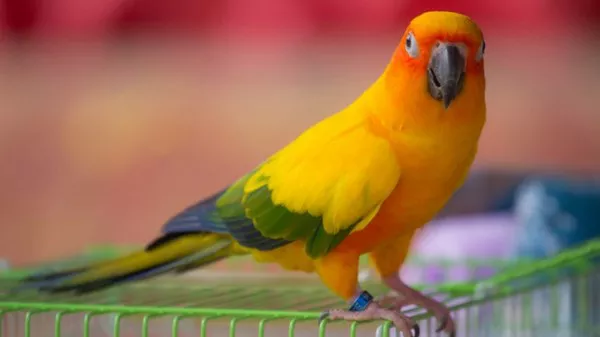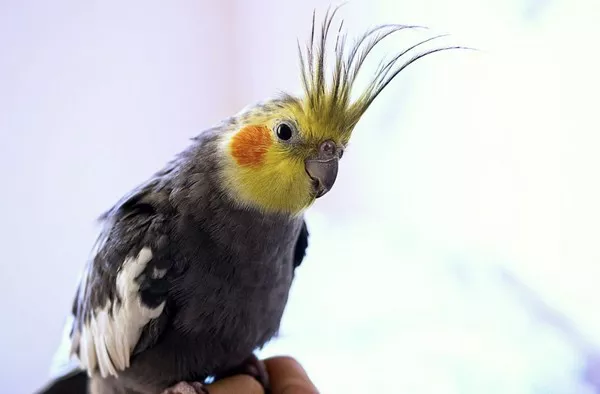Tortoiseshell cats, often referred to as “torties,” are some of the most unique and beautiful felines in the world. Their distinctive coats, a striking combination of black, orange, and sometimes gold or cream, make them easily recognizable. But while their aesthetic beauty is obvious, there is a deeper question many people have: how rare is a tortoiseshell cat? In this article, we will explore the rarity of tortoiseshell cats, the genetics behind their coat colors, and the specific traits that make these cats so special. We’ll also discuss the various factors that contribute to their population in the world of pets and why they are beloved by many.
Understanding Tortoiseshell Cats
To begin our discussion, let’s first examine what a tortoiseshell cat actually is. A tortoiseshell is not a specific breed of cat, but rather a coat color pattern that can appear in many different breeds. The term “tortoiseshell” describes a cat with a coat that features a mix of black and orange (or variations like cream or gold) in a patchwork design. These cats are often distinguished by their “dilute” versions, which include softer, paler shades, and the classic tortoiseshell pattern, which blends darker colors.
A tortoiseshell coat is usually the result of a combination of genetics related to the X chromosome. Female cats typically have two X chromosomes, while male cats have one X and one Y chromosome. This distinction plays a crucial role in the development of tortoiseshell cats.
Genetics Behind the Tortoiseshell Coat
The unique appearance of tortoiseshell cats is due to the inheritance of color genes that are located on the X chromosome. To better understand this, we need to dive into a bit of feline genetics.
There are two primary colors associated with tortoiseshell cats: black and orange. The gene for the black coat color is located on the X chromosome, and it is dominant. The orange gene is also on the X chromosome, but it is recessive. For a cat to inherit a tortoiseshell coat, it must inherit both the black and orange genes.
In females, who have two X chromosomes, this means they can inherit one X chromosome carrying the black gene and one X chromosome carrying the orange gene. The result is a mix of both black and orange colors in the coat. This genetic pattern is what leads to the characteristic tortoiseshell pattern.
However, male cats typically have only one X chromosome (along with one Y chromosome). For a male cat to have a tortoiseshell coat, he would need to inherit an X chromosome with both the black and orange genes, which is incredibly rare. Male tortoiseshell cats are much less common than females because of this genetic restriction.
How Common are Tortoiseshell Cats?
Now that we have a basic understanding of the genetics involved, we can explore how rare tortoiseshell cats are. Statistically, tortoiseshell cats are not extremely rare, but they are less common compared to other coat patterns, such as tabby or solid-colored cats.
The most significant factor contributing to their rarity is the gender of the cat. Since tortoiseshell coats occur when a cat inherits both the black and orange genes from its parents, and only females have two X chromosomes, the majority of tortoiseshell cats are female. It is estimated that about 1 in 3,000 male cats is born with a tortoiseshell coat, making male tortoiseshell cats extremely rare. The vast majority of tortoiseshell cats are female, with their unique coat patterns being a natural consequence of their genetic makeup.
Male Tortoiseshell Cats: A Genetic Anomaly
As mentioned earlier, male tortoiseshell cats are a genetic anomaly. The reason for their rarity is rooted in the fact that males have only one X chromosome, and therefore can only inherit one color gene. For a male cat to be born with a tortoiseshell coat, a genetic mutation must occur.
In most cases, a male tortoiseshell cat will have an extra X chromosome, making him an XXY cat instead of the usual XY. This genetic variation is known as Klinefelter syndrome, which results in the cat having a combination of male and female genetic traits. While rare, male tortoiseshell cats with this extra X chromosome are sometimes born, but they often face health challenges and may have shorter lifespans. Nevertheless, these male tortoiseshell cats are highly sought after by cat lovers due to their rarity and unique genetic makeup.
Tortie Cats and Their Personality Traits
While the tortoiseshell coat is the most distinguishing feature of these cats, many cat owners and enthusiasts believe that tortoiseshell cats also have distinctive personality traits. The idea that torties have a unique temperament has been a topic of discussion among cat lovers for years. Some people claim that tortoiseshell cats are known for being more independent, stubborn, and sometimes even feisty or “sassy.”
While these personality traits may be influenced by individual experiences and circumstances, there is some research that suggests tortoiseshell cats can be more “strong-willed” than other cats. However, it is essential to remember that every cat, regardless of their coat color or pattern, has a unique personality influenced by genetics, environment, and upbringing.
That being said, many tortoiseshell cat owners will attest to the fact that their cats tend to be confident, assertive, and full of energy. They are often described as intelligent and curious, and they may require more attention and stimulation than other cats. Some owners even report that tortoiseshell cats can be more vocal, using their meows to express themselves and get what they want.
Are Tortoiseshell Cats More Expensive?
Another consideration for potential cat owners is the cost of a tortoiseshell cat. Since tortoiseshell cats are not a breed but rather a coat pattern, the price of acquiring one can vary significantly. The cost typically depends on factors such as the cat’s breed, pedigree, and overall health, rather than the fact that it has a tortoiseshell coat.
In general, purebred cats tend to be more expensive, regardless of their coat pattern. For example, if you’re looking for a tortoiseshell cat of a specific breed, such as a Persian or a Maine Coon, you might pay more than you would for a domestic shorthair tortoiseshell cat. However, the rarity of male tortoiseshell cats may drive up the price for those seeking this unique genetic anomaly.
Adoption is another option, and many tortoiseshell cats are available through rescue organizations. Adoption fees can vary, but they tend to be more affordable compared to purchasing a cat from a breeder. Plus, by adopting, you’re giving a cat in need a loving home.
The Emotional Appeal of Tortoiseshell Cats
Aside from their rarity and distinct appearance, tortoiseshell cats often have an emotional appeal that draws people in. Their striking coats of mixed colors often evoke a sense of warmth and beauty, while their sometimes fiery personalities can make them stand out among other cats. For many people, owning a tortoiseshell cat feels like having a special and irreplaceable companion.
Their individuality, both in terms of looks and personality, is part of the allure. Many tortoiseshell cat owners view them as unique and full of character, and the bond that forms between them and their cats is often deeply special. There is no shortage of love and admiration for tortoiseshell cats, and they are frequently featured in social media posts, online cat communities, and fan clubs.
Conclusion
In conclusion, tortoiseshell cats are not exceptionally rare, but they are certainly not as common as some other coat patterns. The rarity is primarily due to the genetic factors involved, particularly the fact that male tortoiseshell cats are a rare genetic anomaly. While female tortoiseshell cats are relatively more common, male tortoiseshell cats are exceedingly rare and highly sought after by cat lovers around the world.
Tortoiseshell cats have become beloved not only for their gorgeous coats but also for their distinct personalities and charm. Whether you’re considering adopting one or simply admiring them from afar, there’s no denying that tortoiseshell cats hold a special place in the hearts of many.
While they may not be the rarest of cats, the combination of their beauty, rarity, and unique personality traits make them a standout among the many different types of cats in the world. So, the next time you see a tortoiseshell cat, take a moment to appreciate their uniqueness and consider how lucky you are to be in the presence of such a fascinating and beloved feline companion.
Related Topics:























